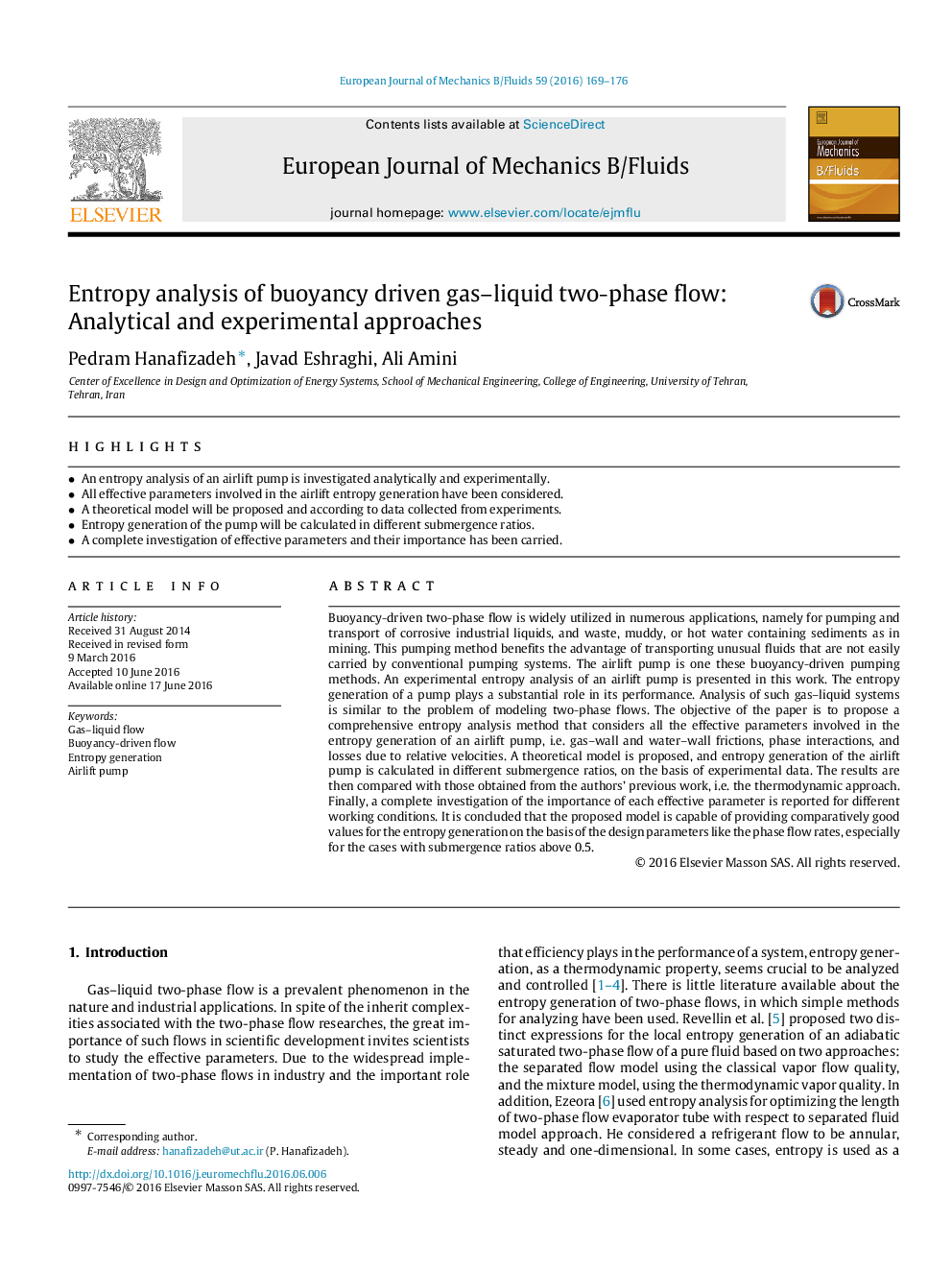| کد مقاله | کد نشریه | سال انتشار | مقاله انگلیسی | نسخه تمام متن |
|---|---|---|---|---|
| 650198 | 1457265 | 2016 | 8 صفحه PDF | دانلود رایگان |
• An entropy analysis of an airlift pump is investigated analytically and experimentally.
• All effective parameters involved in the airlift entropy generation have been considered.
• A theoretical model will be proposed and according to data collected from experiments.
• Entropy generation of the pump will be calculated in different submergence ratios.
• A complete investigation of effective parameters and their importance has been carried.
Buoyancy-driven two-phase flow is widely utilized in numerous applications, namely for pumping and transport of corrosive industrial liquids, and waste, muddy, or hot water containing sediments as in mining. This pumping method benefits the advantage of transporting unusual fluids that are not easily carried by conventional pumping systems. The airlift pump is one these buoyancy-driven pumping methods. An experimental entropy analysis of an airlift pump is presented in this work. The entropy generation of a pump plays a substantial role in its performance. Analysis of such gas–liquid systems is similar to the problem of modeling two-phase flows. The objective of the paper is to propose a comprehensive entropy analysis method that considers all the effective parameters involved in the entropy generation of an airlift pump, i.e. gas–wall and water–wall frictions, phase interactions, and losses due to relative velocities. A theoretical model is proposed, and entropy generation of the airlift pump is calculated in different submergence ratios, on the basis of experimental data. The results are then compared with those obtained from the authors’ previous work, i.e. the thermodynamic approach. Finally, a complete investigation of the importance of each effective parameter is reported for different working conditions. It is concluded that the proposed model is capable of providing comparatively good values for the entropy generation on the basis of the design parameters like the phase flow rates, especially for the cases with submergence ratios above 0.5.
Journal: European Journal of Mechanics - B/Fluids - Volume 59, September–October 2016, Pages 169–176
